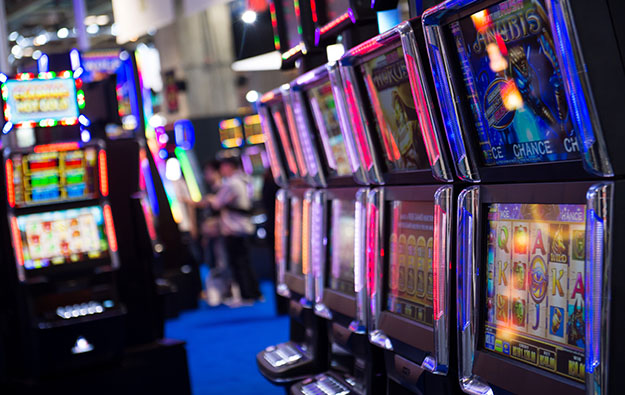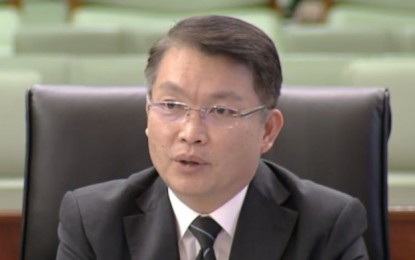Philippines should enforce casino entry fee: think tank
Jan 08, 2018 Newsdesk Latest News, Philippines, Top of the deck

An entry fee of at least PHP500 (US$10) or as much as PHP1,500 should be enforced on all players that patronise casinos in the Philippines, suggests a recently-released report from the National Tax Research Center, a body under the Department of Finance.
Its paper added that currently under Presidential Decree 1869, while foreigners were able to enter casinos freely, locals were required to have proof of gross income amounting to PHP50,000 per year to use the country’s casinos. But the tax research body said that “in practice, said requirement is neither observed nor imposed”.
The tax research paper noted that were a PHP1,500 levy to be imposed, even if it led to an 80-percent reduction in the number of local entrants, the levy system would generate PHP1.67 billion in revenue.
The body stated that two bills proposed in the House of Representatives in 2016 and 2017 respectively for either a PHP3,000 or PHP3,500 entry fee, were figures “seen to be too high and will effectively restrict entrance to casinos of residents except for those who have extra money to spend”.
In December 2015, an official of the National Tax Research Center had backed the idea of a PHP3,500 levy.
The latest research paper said that a PHP1,500-level of entry fee had been proposed in an October 2017 responsible gaming ordinance by Quezon City Council for any casino that might be located there.
In June 2016 Enrique Razon, chairman of Bloomberry Resorts Corp, said that he planned to build a mass-market focused casino in Quezon City. Mr Razon told Reuters in September last year that construction for the scheme was expected to begin in the second half of this year.
Quezon City, an urban area to the northeast of the country’s administrative capital, is part of the Eastern Manila District.
The tax research body noted however that in practice, the best way to proceed was likely to be to enforce existing rules. It said that under Executive Order 48 – issued in 1993 – the country’s gaming regulator-cum-operator, the Philippine Amusement and Gaming Corp (Pagcor), was empowered to collect what the research body termed a “qualifying fee” on all players – foreign as well as local – entering casinos in that country.
The collection of such fees had been declining from PHP20.2 million in 2005, said the tax research body, adding that in 2016, total collection of qualifying fees had been PHP14.44 million.
“The collection is remitted to the national treasury and forms part of the general fund. However, there is no breakdown on the amount of the qualifying fee collected from local and foreign entrants,” stated the paper.
“In view of Executive Order 48, there is no need for a bill that would mandate Pagcor to collect a casino entrance fee. Perhaps what can be done is to make the collection of qualifying fee compulsory for players in all casinos operating in the Philippines,” said the research body.
“If indexed to inflation, the amount would be around PHP320 but may be rounded off to PHP500 or to as high as PHP1,500, similar to what Quezon City is proposing,” said the tax research team’s paper.
Private sector dominates
The tax research centre report estimated that Philippine casinos recorded a total of 16.68 million entries by locals from 2014 to 2016, adding that the average annual growth rate in the number of local patrons during that time had been just under 6 percent.
It said of the 5.56 million average entries by locals annually during that period, “99 percent… played at licensed [private-sector] casinos while the remaining 1 percent were registered patrons of Pagcor-operated casinos”.
The tax research body stated that – citing Pagcor data – of what it said were PHP128.44 billion in gross gaming revenue generated by the Philippine casino industry in 2016, a total of 80 percent came from private-sector venues.
A report last week from investment bank Morgan Stanley Asia Ltd estimated that casino gross gaming revenue for the large-scale private-sector Manila casinos would reach nearly PHP146 billion in 2018.
The tax research centre paper said that as of 2016, there were 54 casinos operating in the Philippines, a 74-percent increase from the 31 it said were in the market in 2007. Of the 2016 total, 44 were Pagcor-operated casinos and 10 were in the private sector.
“Given the industry’s high income potential, this paper examines the feasibility of imposing an entrance fee in casinos in the Philippines to raise needed revenue for the government and to regulate entrance thereto,” said the tax research entity.
Related articles
-
 Future of gaming is the online format:...
Future of gaming is the online format:...Nov 20, 2024
-
 Offshore online gaming ops posing as...
Offshore online gaming ops posing as...Nov 19, 2024
More news
-
 Macau to get 36mln visitors in 2025:...
Macau to get 36mln visitors in 2025:...Nov 21, 2024
-
 EBITDA a focus in Macau market share...
EBITDA a focus in Macau market share...Nov 21, 2024
Latest News
Nov 21, 2024
Macau’s 2025 visitor tally could reach 36 million, or a circa 9-percent gain on this year’s projected 33 million. So said Lei Wai Nong (pictured in a file photo), the city’s Secretary for...Sign up to our FREE Newsletter
 (Click here for more)
(Click here for more)
Pick of the Day
”[Baccarat side bets in Macau] are becoming more popular amongst players, based on what we observed when we conducted our [monthly premium mass] table surveys”
George Choi and Timothy Chau
Analysts at Citigroup
Most Popular
 Gaming technology firm IGT reports hacking incident November 21, 2024
Gaming technology firm IGT reports hacking incident November 21, 2024  US$30bln 2025 GGR target achievable for Macau: CE November 19, 2024
US$30bln 2025 GGR target achievable for Macau: CE November 19, 2024  Marina Bay Sands projects 40pct EBITDA leap post extension November 20, 2024
Marina Bay Sands projects 40pct EBITDA leap post extension November 20, 2024  Macau big-event outdoor venue gets trial run Dec 28: CE November 20, 2024
Macau big-event outdoor venue gets trial run Dec 28: CE November 20, 2024  Future of gaming is the online format: Pagcor chairman November 20, 2024
Future of gaming is the online format: Pagcor chairman November 20, 2024









